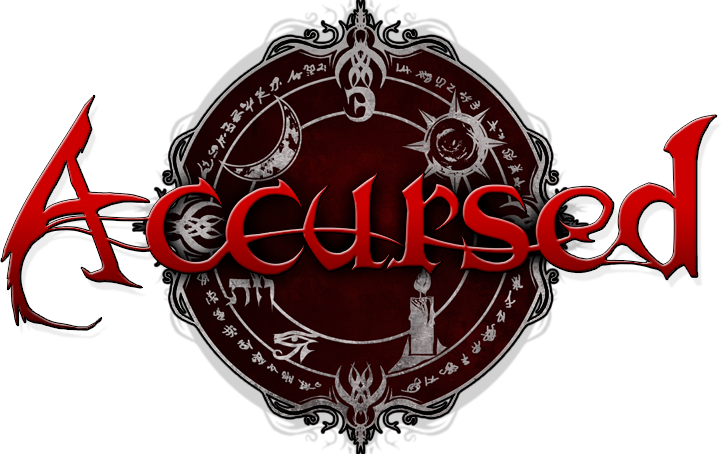With the war concluded, the surviving Witchmarked were largely abandoned. The witches and the new governments had no desire to support the Accursed. Commons citizens wanted nothing to do with the reminders of the lost war and the terrible sacrifices made to the Witches. Governors were unwilling to try to force the citizens of their cities to accommodate the Witchmarked. Many feared that this could lead to rioting and further deaths, potentially adding new delays to the process of rebuilding after the war. Even the few Accursed who still had surviving families were unable to return to their homes. Most families were unwilling to accept the transformed monstrosities as their missing relatives. Many other Witchmarked were unwilling to even face their families, knowing the horrors that they had become.
It was the Enochian church that first offered a solution to this problem. The conclave of bishops feared that the souls of all Accursed were truly damned, but they did believe that there might be some faint hope for redemption. To attain this goal, they created the Order of the Penitent. The organization's goal was to offer the Accursed an opportunity to cleanse their souls through service to God and humanity. The bishops designated St. Vitus—patron saint of redemption—as patron saint of the order. Upon joining the order, each accursed was assigned a blessed medallion containing a relic of St. Vitus to remind them of their sacred obligation to the cause.
In the few short years since its formation, most Accursed have eagerly joined the Order. Accepting the title of Penitent, these desperate souls have found an organization that offers both a home and a chance at redemption. Members need not swear any vows—though many do. They simply must devote their lives to serving the Order's goals as best they can. Often, the church sends requests to the Order's members, asking for assistance in various tasks. In turn, Enochian churches offer shelter, succor, and basic amenities to the Penitents that visit seeking a place for spiritual and physical recuperation.
The Order's Factions
During its brief existence, many Accursed have used the Order for a variety of causes, and different factions have begun to emerge. While these factions are seldom truly divisive, there are often members holding conflicting viewpoints within the Order. The Enochian church has not taken an official stance towards any of these different sects. Some argue that this is a sign the church is unaware of their existence. Others believe more strongly that this is simply a way for the church to pretend that the Order is a unified group that remains true to its original focus of penitence and redemption.
One large group is fiercely devoted to establishing an Accursed homeland, separate from the places inhabited by humanity. Members of this faction, who refer to themselves as Darksiders, have begun working to try to find places and resources so that they could establish an independent nation devoted to the surviving Accursed. The Enochian church has not acknowledged this effort, and—as there are no high-ranking Witchmarked clergy—would be unlikely to endorse it. In spite of this, adherents believe that the group is gaining momentum and making progress towards founding their nation. With the weakened governments and the massive losses from the war, there are certainly areas open to new settlement.
Other significant factions within the Order exist among the various Witchbreeds. It seems that many Accursed have come to prefer the companies of those who share their curse. In some instances, those Penitents who have learned new ways of unlocking their Witchmarks have begun to mentor those who are less accomplished. This has created an institutionalized system for learning more about their unholy corruption within an organization that is ironically devoted to redemption and forgiveness.

"Upon joining the order, each accursed was assigned a blessed medallion containing a relic of St. Vitus..."
ReplyDeleteIs this a actual piece of the saint, like a bone? or is it ashes from his cremation? was it something he made or touched? Relics of a Saint are rare and precious things, just how many of them are there?
I could actually see if he were also a pot maker and each relic was a shard of a pot he made. Over his lifetime he might have made thousands of pots and other ceramic works. Each medallion may have just a sliver of fired clay in it.
The relic contained within the medallion would be a very small fragment of St. Vitus's remains. Essentially a tiny sliver of bone. Certainly, there are a finite number of these, but the order would likely have the capability to make tens of thousands such medallions before the source material would completely run out. To this point, the order is just not that large. (No, we're not going to give specific numbers.) In the event that were to become a problem, they would likely simply touch the newly forged medallions to St. Vitus's remains, functionally transforming them into secondary relics.
ReplyDeleteThat will work. best thing to do is keep his skull whole as the main relic. Of course if he was crushed to death and his remains are normally this way, that would also explain a bit. No need to elaborate further, I think it best left to each GM on the hows and whys. Unless you are going to come out with a sourcebook on the faith.
ReplyDelete